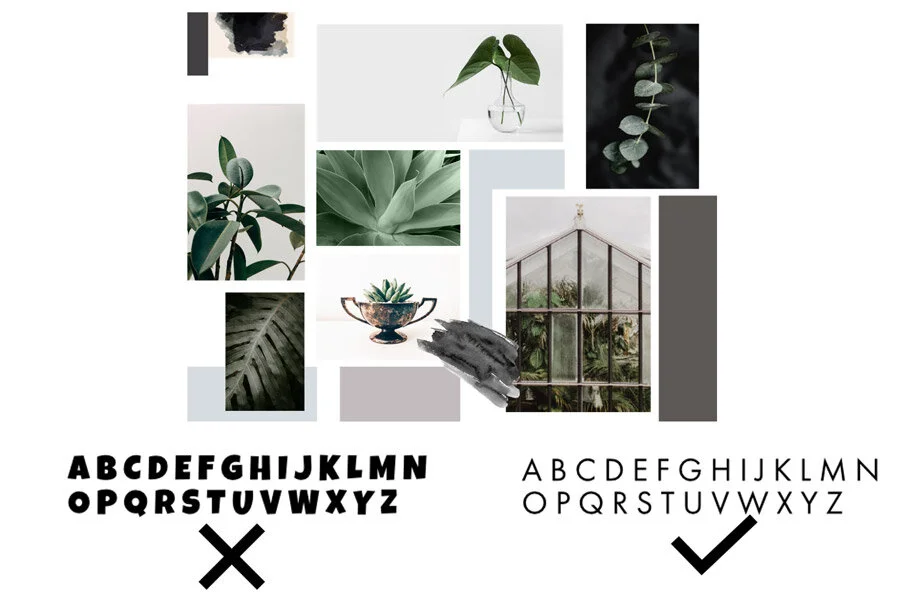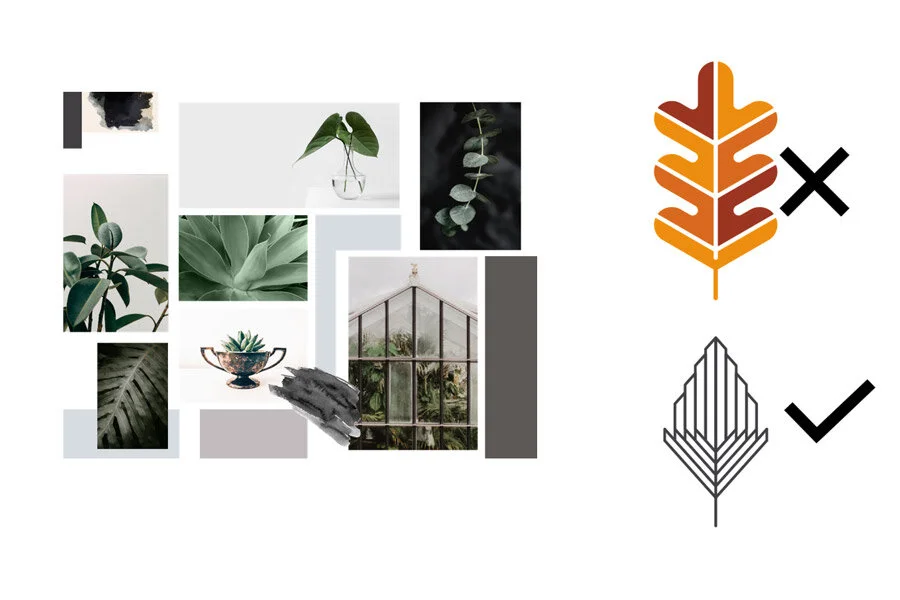How Can A Mood Board Build Your Interior Design Brand?
Creating the visual part of your brand identity for your interior design business can be overwhelming. Where to even start? Color palette, logo, font, imagery?
I’ve been there with the branding overwhelm. (Trust me on this one - I once rebranded less than a year after my initial rebrand!) I wish I knew then what I know now, because I have a *secret* tool to help you out - a branding mood board.
You’ve heard the phrase “a picture is worth a thousand words.” A mood board makes branding, and any other kind of design decision-making, easier. How does it do this? We’ll get to that, but first let’s consider a couple questions:
What exactly is a brand?
What is a mood board?
And how do they work together?!
Read on to find out why a mood board is always the first step in building an effective brand identity, and why you need one for your brand.
[This post contains affiliate links. Click here to read my full disclosure.]
What is a brand?
“A brand is an expectation of an experience. It helps me understand what I will feel if I'm working with you or serving alongside of you. How will I feel if I hire you, or employ you, or promote you? Your personal brand is your reputation. It's your legacy. It tells people what they can expect from you.”
Lida Citroën via LinkedIn Learning
What is a mood board?
A mood board is essentially a collage of images. Words certainly aren’t excluded from mood boards, but a mood board is mostly composed of imagery used to establish the design direction of a project.
By settling on a mood board before any actual design work begins, you can avoid wasting valuable time and money going down a wrong path. This is true even if you are the “client” working on your own business brand.
You can also see how valuable a mood board is when working with an actual client too. Even if you and a client have talked a lot about their needs and wants, you still may have different visions for the direction of the project.
A client’s vision of a “warm contemporary” kitchen may be quite different from your own for example. By reviewing imagery compiled on your mood board together, you and your client can be sure you’re both on the same page before you actually dive into design work.
So a mood board is a designer’s go-to tool for any project’s initial planning phase, whether it’s for your own personal branding project, or for your client’s new kitchen remodel.
A mood board I made a while back for for my home and garden blog Greenhouse Studio.
How To Create A Mood Board
At this point you may be thinking “Well that’s great Tina, but how do I actually make a mood board?” No worries! I have a couple posts that take you through it step by step:
Establishing Brand Identity With A Mood Board
A mood board helps tell a brand’s story by serving as it’s visual foundation. Looking at a mood board should evoke certain emotions, and the viewer should be able to get the general vibe of the brand.
So a mood board’s first job is to work as a tool to guide the creation of a brand’s identity. It serves as a source of inspiration.
It’s the place where you can pull together different images and ideas and see how they work together. Once you pull together enough ideas, you can stand back and evaluate them together.
Do they convey the message and feel you want your brand to communicate? What works, what doesn’t, and why?
Then when you continue to work on branding your business and you get stuck on something, you can refer to the brand mood board to evaluate a possible design asset (logo, color, font etc).
For example, say you pick out a font that really catches your eye. It’s bold, modern, and blocky. If you’ve started to establish your brand mood board, you would compare your font to the overall look and feel of your mood board, and decide if the font is a good fit or not.
Is it’s look, feel, and style cohesive with the aesthetic of the mood board? If it is, great - it could be included.
If not, the font could be eliminated because it’s not a cohesive fit. Perhaps your board is minimalist and understated, and this font is anything but.
OR - you may decide you like the font so much you want to include it. This would then shift the direction of your brand identity, and you may need to tweak some of your other design assets to make it all look cohesive.
Check out the examples below using my a Greenhouse Studio mood board:
The blocky, playful font looks out of place next to the imagery. The clean, minimalist font on the right works well with the mood board’s aesthetic. Image | Greenhouse Studio
The colorful, rounded oakleaf graphic isn’t a good fit with the Greenhouse Studio mood board. The geometric leaf below is now part of my logo. Image | Greenhouse Studio
The point here is to make a conscious decision about your branding assets. And having your brand mood board as a visual reference for comparison helps you do that.
How A Mood Board Helps After You’ve Branded
Once brand identity has been established, the mood board continues to serve as a resource for guiding on-going design decisions.
It helps answer on-going brand identity questions. If you’re evaluating a potential design asset, you can look back to the mood board and ask:
“Does this asset communicate my brand?”
And a related follow-up question is:
“Is this asset something that my target market would find appealing?”
A mood board can prevent us from getting sidetracked into going with something just because we like it. It helps us stay focused on our message.
To wrap things up, let’s circle back to the original branding process. It turns out, pictures really are worth a thousand words.
A mood board helps guide the creation of your brand’s visual identity, and once that’s established, it continues to help build your brand by by serving as a reference point and a basis for comparison.
Other business-building posts:
Don’t forget to Pin it for later!
If you have any questions or comments, please drop me a note below. Be sure to check back for my response (I always respond) since no notification is sent.






